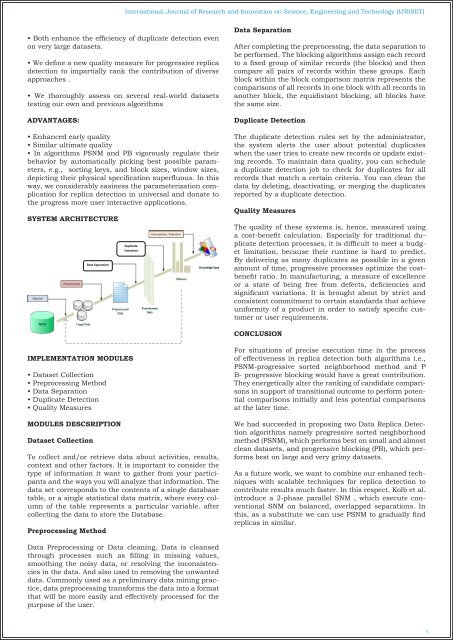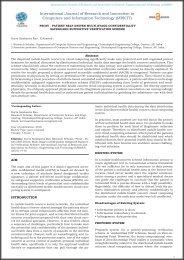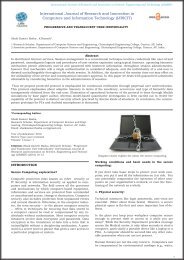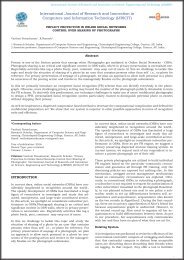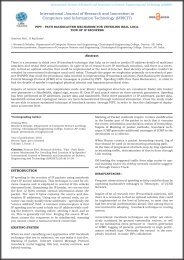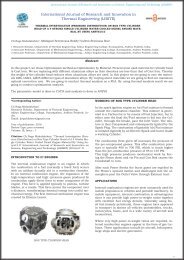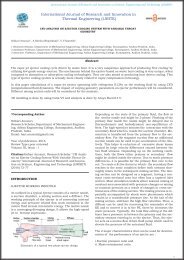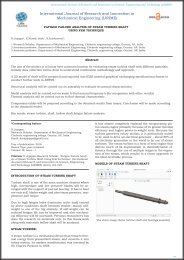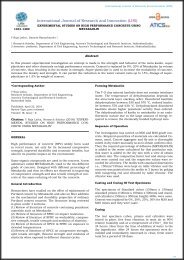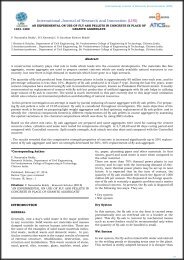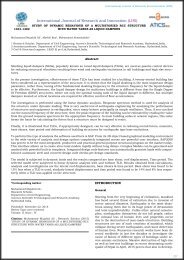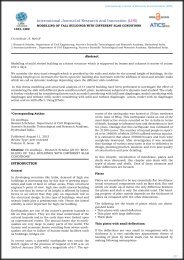IJRICIT-01-002 ENHANCED REPLICA DETECTION IN SHORT TIME FOR LARGE DATA SETS
Similarity check of real world entities is a necessary factor in these days which is named as Data Replica Detection. Time is an critical factor today in tracking Data Replica Detection for large data sets, without having impact over quality of Dataset. In this we primarily introduce two Data Replica Detection algorithms , where in these contribute enhanced procedural standards in finding Data Replication at limited execution periods.This contribute better improvised state of time than conventional techniques . We propose two Data Replica Detection algorithms namely progressive sorted neighborhood method (PSNM), which performs best on small and almost clean datasets, and progressive blocking (PB), which performs best on large and very grimy datasets. Both enhance the efficiency of duplicate detection even on very large datasets.
Similarity check of real world entities is a necessary factor in these days which is named as Data Replica Detection.
Time is an critical factor today in tracking Data Replica Detection for large data sets, without having impact over quality
of Dataset. In this we primarily introduce two Data Replica Detection algorithms , where in these contribute enhanced
procedural standards in finding Data Replication at limited execution periods.This contribute better improvised state
of time than conventional techniques . We propose two Data Replica Detection algorithms namely progressive sorted
neighborhood method (PSNM), which performs best on small and almost clean datasets, and progressive blocking (PB),
which performs best on large and very grimy datasets. Both enhance the efficiency of duplicate detection even on very
large datasets.
You also want an ePaper? Increase the reach of your titles
YUMPU automatically turns print PDFs into web optimized ePapers that Google loves.
International Journal of Research and Innovation on Science, Engineering and Technology (IJRISET)<br />
• Both enhance the efficiency of duplicate detection even<br />
on very large datasets.<br />
• We define a new quality measure for progressive replica<br />
detection to impartially rank the contribution of diverse<br />
approaches .<br />
• We thoroughly assess on several real-world datasets<br />
testing our own and previous algorithms<br />
ADVANTAGES:<br />
• Enhanced early quality<br />
• Similar ultimate quality<br />
• In algorithms PSNM and PB vigorously regulate their<br />
behavior by automatically picking best possible parameters,<br />
e.g., sorting keys, and block sizes, window sizes,<br />
depicting their physical specification superfluous. In this<br />
way, we considerably easiness the parameterization complication<br />
for replica detection in universal and donate to<br />
the progress more user interactive applications.<br />
SYSTEM ARCHITECTURE<br />
Data Separation<br />
Duplicate<br />
Detection<br />
Data Separation<br />
After completing the preprocessing, the data separation to<br />
be performed. The blocking algorithms assign each record<br />
to a fixed group of similar records (the blocks) and then<br />
compare all pairs of records within these groups. Each<br />
block within the block comparison matrix represents the<br />
comparisons of all records in one block with all records in<br />
another block, the equidistant blocking, all blocks have<br />
the same size.<br />
Duplicate Detection<br />
The duplicate detection rules set by the administrator,<br />
the system alerts the user about potential duplicates<br />
when the user tries to create new records or update existing<br />
records. To maintain data quality, you can schedule<br />
a duplicate detection job to check for duplicates for all<br />
records that match a certain criteria. You can clean the<br />
data by deleting, deactivating, or merging the duplicates<br />
reported by a duplicate detection.<br />
Quality Measures<br />
The quality of these systems is, hence, measured using<br />
a cost-benefit calculation. Especially for traditional duplicate<br />
detection processes, it is difficult to meet a budget<br />
limitation, because their runtime is hard to predict.<br />
By delivering as many duplicates as possible in a given<br />
amount of time, progressive processes optimize the costbenefit<br />
ratio. In manufacturing, a measure of excellence<br />
or a state of being free from defects, deficiencies and<br />
significant variations. It is brought about by strict and<br />
consistent commitment to certain standards that achieve<br />
uniformity of a product in order to satisfy specific customer<br />
or user requirements.<br />
CONCLUSION<br />
IMPLEMENTATION MODULES<br />
• Dataset Collection<br />
• Preprocessing Method<br />
• Data Separation<br />
• Duplicate Detection<br />
• Quality Measures<br />
MODULES DESCSRIPTION<br />
Dataset Collection<br />
To collect and/or retrieve data about activities, results,<br />
context and other factors. It is important to consider the<br />
type of information it want to gather from your participants<br />
and the ways you will analyze that information. The<br />
data set corresponds to the contents of a single database<br />
table, or a single statistical data matrix, where every column<br />
of the table represents a particular variable. after<br />
collecting the data to store the Database.<br />
Preprocessing Method<br />
For situations of precise execution time in the process<br />
of effectiveness in replica detection both algorithms i.e.,<br />
PSNM-progressive sorted neighborhood method and P<br />
B- progressive blocking would have a great contribution.<br />
They energetically alter the ranking of candidate comparisons<br />
in support of transitional outcome to perform potential<br />
comparisons initially and less potential comparisons<br />
at the later time.<br />
We had succeeded in proposing two Data Replica Detection<br />
algorithms namely progressive sorted neighborhood<br />
method (PSNM), which performs best on small and almost<br />
clean datasets, and progressive blocking (PB), which performs<br />
best on large and very grimy datasets.<br />
As a future work, we want to combine our enhaned techniques<br />
with scalable techniques for replica detection to<br />
contribute results much faster. In this respect, Kolb et al.<br />
introduce a 2-phase parallel SNM , which execute conventional<br />
SNM on balanced, overlapped separations. In<br />
this, as a substitute we can use PSNM to gradually find<br />
replicas in similar.<br />
Data Preprocessing or Data cleaning, Data is cleansed<br />
through processes such as filling in missing values,<br />
smoothing the noisy data, or resolving the inconsistencies<br />
in the data. And also used to removing the unwanted<br />
data. Commonly used as a preliminary data mining practice,<br />
data preprocessing transforms the data into a format<br />
that will be more easily and effectively processed for the<br />
purpose of the user.<br />
5


